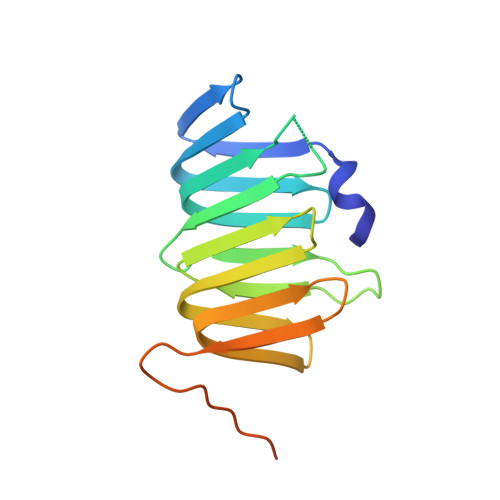Novel structure of the conserved gram-negative lipopolysaccharide transport protein A and mutagenesis analysis.
Suits, M.D., Sperandeo, P., Deho, G., Polissi, A., Jia, Z.(2008) J Mol Biology 380: 476-488
- PubMed: 18534617
- DOI: https://doi.org/10.1016/j.jmb.2008.04.045
- Primary Citation of Related Structures:
2R19, 2R1A - PubMed Abstract:
Lipopolysaccharide (LPS) transport protein A (LptA) is an essential periplasmic localized transport protein that has been implicated together with MsbA, LptB, and the Imp/RlpB complex in LPS transport from the inner membrane to the outer membrane, thereby contributing to building the cell envelope in Gram-negative bacteria and maintaining its integrity. Here we present the first crystal structures of processed Escherichia coli LptA in two crystal forms, one with two molecules in the asymmetric unit and the other with eight. In both crystal forms, severe anisotropic diffraction was corrected, which facilitated model building and structural refinement. The eight-molecule form of LptA is induced when LPS or Ra-LPS (a rough chemotype of LPS) is included during crystallization. The unique LptA structure represents a novel fold, consisting of 16 consecutive antiparallel beta-strands, folded to resemble a slightly twisted beta-jellyroll. Each LptA molecule interacts with an adjacent LptA molecule in a head-to-tail fashion to resemble long fibers. Site-directed mutagenesis of conserved residues located within a cluster that delineate the N-terminal beta-strands of LptA does not impair the function of the protein, although their overexpression appears more detrimental to LPS transport compared with wild-type LptA. Moreover, altered expression of both wild-type and mutated proteins interfered with normal LPS transport as witnessed by the production of an anomalous form of LPS. Structural analysis suggests that head-to-tail stacking of LptA molecules could be destabilized by the mutation, thereby potentially contributing to impair LPS transport.
- Department of Biochemistry, Queen's University, Kingston, Ontario, Canada.
Organizational Affiliation:
















